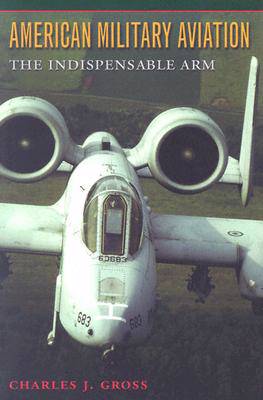
- Afhalen na 1 uur in een winkel met voorraad
- Gratis thuislevering in België vanaf € 30
- Ruim aanbod met 7 miljoen producten
- Afhalen na 1 uur in een winkel met voorraad
- Gratis thuislevering in België vanaf € 30
- Ruim aanbod met 7 miljoen producten
Zoeken
Omschrijving
Since the Wright brothers made their famed flight at Kitty Hawk in 1903, aviation has emerged as the indispensable arm of American military power. In this detailed and informative history, Charles J. Gross traces its development from the technological antecedents of the Wright brothers' triumph through the air war for Kosovo. Drawing on examples from all periods and all service branches, he explains the roles of politics, economics, and technology in shaping air power in the U.S. armed forces and assesses the actual impact of military aviation on warfare. Gross discusses major developments in aircraft, doctrine, training, and operations. He also provides discussions of airlift, in-flight refueling, military budgets, industry, and inter-service squabbling. He deftly sketches the evolution of the air arms of each of the different services and provides clear analysis of military budgets. He provides assessments of Eisenhower's "New Look" and MAD (Mutually Assured Destruction); of McNamara's effort to use "commonality"of equipment to cut costs and Kennedy's buildup of the military; of the Nixon Doctrine and the failure of air power to resolve the long drawn-out conflict in Southeast Asia; and of the growing reliance on American air-power in the post-Cold War world. This well illustrated volume offers the first broad history of American military aviation. Military professionals, scholars, civilian government policy makers and planners, members of the media who concentrate on defense matters, and interested members of the general public will all rely on this book as the invaluable guide to the "indispensable arm."
Specificaties
Betrokkenen
- Auteur(s):
- Uitgeverij:
Inhoud
- Aantal bladzijden:
- 392
- Taal:
- Engels
- Reeks:
- Reeksnummer:
- nr. 2
Eigenschappen
- Productcode (EAN):
- 9781585442553
- Verschijningsdatum:
- 9/09/2002
- Uitvoering:
- Paperback
- Formaat:
- Trade paperback (VS)
- Afmetingen:
- 158 mm x 235 mm
- Gewicht:
- 657 g

Alleen bij Standaard Boekhandel
+ 75 punten op je klantenkaart van Standaard Boekhandel
Beoordelingen
We publiceren alleen reviews die voldoen aan de voorwaarden voor reviews. Bekijk onze voorwaarden voor reviews.











